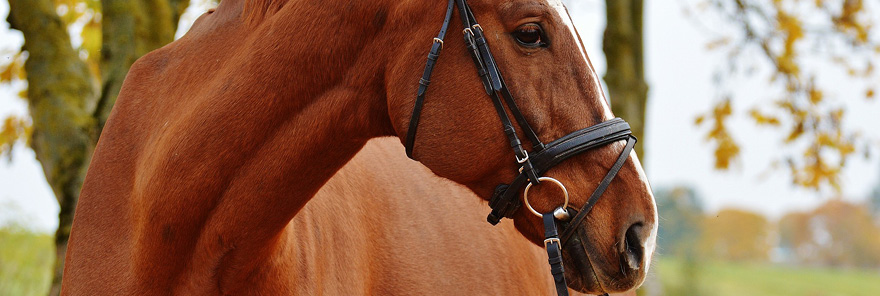Another summer is drawing to a close, and you’re probably just a little relieved. Summer sounds great when you’re daydreaming through February, but this has been a long, hot summer for a lot of us. Horses and humans alike are ready for a little bit of a cool-down.
Of course, horses being horses, there are unique health hazards associated with the autumn season. We have a few things to watch out for as the leaves change and the temperature cools. These are all autumn hazards for your horse.
Have you ever noticed a horse deliberately eating acorns? Some horses actually develop a taste for them as they fall from oak trees. This squirrel impression is a serious health hazard (like most weird habits your horse picks up). Every part of the oak tree can cause gastrointestinal and kidney damage, thanks to the high levels of tannic acid the branches, leaves, and acorns contain. While most horses don’t need to be pulled from a field containing oak trees, keep an eye on your horse’s habits, and if you see symptoms matching acorn poisoning — including constipation, colic, bloody urine, dehydration, or edema in the legs — check to see if your trees are the culprit.
While you’re watching your oak trees, keep an eye on pastures containing sycamores and box elders as well. Their familiar propellor-shaped seeds could be the cause of an often-fatal disease known as seasonal pasture myopathy, or atypical myopathy, which can crop up in grazing horses during fall and spring. The horses who pick up this disease, which usually includes muscle weakness, fatigue, colic, and trembling, are often on sparse pasture and might have been over-eating sycamore seeds they wouldn’t have otherwise consumed. Keeping horses off bad grazing under sycamore trees is the best way to prevent the disease. This article at Horse and Hound (www.horseandhound.co.uk/features/equine-atypical-myopathy-horses) details some studies on atypical myopathy.
Would you be startled to learn that there’s a high risk of laminitis in the fall? While most horsemen think of laminitis as a spring disease, associated with lush new grass, there’s a seasonal uptick in laminitis diagnoses each autumn. Hoof expert Fran Jurga has a few theories for the reason behind the surge in hoof inflammation, which she explains at Trail Rider Mag (www.trailridermag.com/article/grass-laminitis-fall-risks), including a typical increase in rain each fall, which causes a resurgence in grass growth just before it goes dormant for winter. Her suggestions for prevention? Track your horse’s condition — sudden weight gain can be a trigger for laminitis. Keep your horse in work, and watch the weather for cool nights and warm days, which can bring dry grass back into spring lushness.
Wet fall weather can spell trouble for your horse’s hooves in more than one way. You’ll also want to watch for thrush, the nasty fungal infection that can literally eat your horse’s delicate frog. Thrush doesn’t just come from mud — the fungus loves dirty mud, that is mixed with urine and manure. This means the best way to fight it is to be prepared for fall rains with clean yards, gate areas — anywhere your horses hang out that gets churned up and muddy. If you notice the smelly infection in your horse’s hooves, you’ll need to work hard to kill the fungus off. Equisearch has good tips (www.equisearch.com/article/thrush-in-horses) on how to get anti-fungal medication into all the nooks and crannies where thrush lives.
Fall: it’s an exciting time! The weather is getting cooler! The horse show season is in full swing! Everyone’s feeling good! Keep it that way with careful prevention measures and good horsekeeping.


